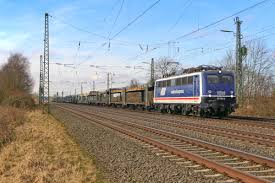Understanding the Surge in Express Delivery Services

Introduction
In today’s fast-paced world, express delivery services have become an essential component of both consumer expectations and business operations. With the rise of e-commerce, the demand for quick and efficient delivery options has skyrocketed, compelling retailers to adapt to this new reality. The growing trend signifies not just a shift in logistics but also highlights changing consumer preferences, especially in light of recent global events like the COVID-19 pandemic.
Current Landscape of Express Delivery Services
Recent data indicates that the global express delivery market is projected to reach approximately £300 billion by 2025, growing at a compound annual growth rate (CAGR) of 7.5%. Major players, including FedEx, UPS, and DHL, have expanded their operations, introducing innovations to speed up delivery. For instance, companies are increasingly utilising advanced technologies such as artificial intelligence and machine learning to optimise routing and enhance efficiency.
Additionally, last-mile delivery solutions tailored for urban environments have emerged, allowing for same-day deliveries and pickup services. A survey conducted by the British Retail Consortium found that 73% of consumers are willing to pay extra for same-day delivery, highlighting an important consumer trend. Businesses responding to this demand include local groceries and meal kit services that now offer express options to cater to time-conscious customers.
Challenges Facing the Industry
Despite its growth, the express delivery sector faces challenges including rising fuel costs, labour shortages, and the environmental impact of increased carbon emissions from additional delivery vehicles on the roads. Many businesses are now exploring eco-friendly logistics options, such as electric delivery vans and bicycle couriers, to mitigate their environmental footprint while still meeting consumer demands.
Future Outlook
The future of express delivery services appears bright but is contingent upon businesses innovating and addressing current challenges. As technology continues to evolve, solutions such as drone delivery and automated warehouses may become commonplace, potentially reshaping the landscape further. Companies that successfully leverage technology while maintaining a customer-centric approach are likely to thrive in this competitive environment.
Conclusion
The rise of express delivery services is more than a fad; it reflects a fundamental shift in how consumers interact with businesses. As expectations for speed and convenience rise, the need for adaptable delivery solutions has never been more significant. Both businesses and consumers are poised to benefit from this trend, but it will require concerted efforts to address its associated challenges. With effective strategies in place, the express delivery sector is set to become a staple part of consumer experience in the UK and beyond.









